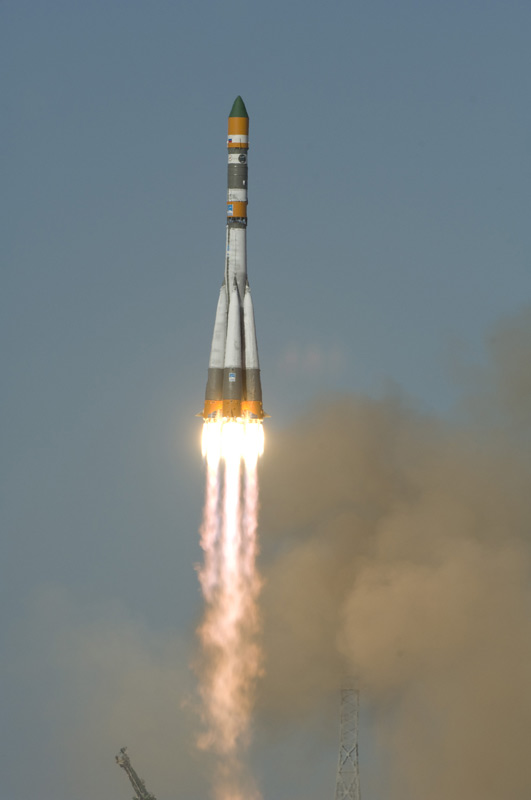Mars 'Pregnancy Test' Orbits Earth

A newexperiment similar to a pregnancy test but designed to search for signs of lifeon Mars is now exposed to the vacuum of space above Earth.
TheEuropean Space Agency's (ESA) postage-stamp-sized experiment, called the"Life Marker Chip" (LMC), was launched last week aboard a Russian rocket launched from Baikonur Cosmodrome, Kazakhstan. Strapped to the ESA'slarge Foton-M3 capsule, the tiny experiment harbors more than 2,000life-detecting samples that glow if they encounter life-critical compounds,such as proteins or DNA.
Scientists and engineers hope the life-sensing chip canremain viable in the harsh radiation, temperatures and vacuum of space during atrip to Mars.
"Thiswill be the first time that these types of materials will have flownunprotected in space in a manner similar to a flight to Mars," said AndrewSteele, a molecular biologist at the Carnegie Institution in Washington, D.C.
The LMCexperiment works like a pregnancy test, which uses color-changing chemicals topick up traces of hormones found in greater numbers afterconception. Scientists will examine the LMC's samples once the Foton-M3mission returns to Earth on Sept. 25 near the Russia-Kazakhstan border.
Theexperiment's managers ultimately hope to strap their fully tested device aboardthe ESA's "ExoMars" robotic rover mission, planned for launch in2013, where it would serve as a tiny "lab-on-a-chip" to detect tracesof past or present martian life.
"Thismission will be an important stepping stone in our ultimate goal of putting aLMC experiment on the surface of Mars and using it to search for evidence oflife," said Mark Sims, an LMC mission manager at University of Leicesterin the U.K.
Breaking space news, the latest updates on rocket launches, skywatching events and more!
The LMCexperiment is one of nine others found in the cylindrical "BIOPAN-6"compartment bolted to the outside of the Foton-M3 capsule. When thesatellite reached a stable orbit on Friday, BIOPAN-6 opened its hatch to beginexposing the 10 experiments to space for 12 days.
- Top 10 Most Amazing Mars Rover Discoveries
- Mission to Test 'Space Mail' Delivery System
- VIDEO: Orbital Animals
Dave Mosher is currently a public relations executive at AST SpaceMobile, which aims to bring mobile broadband internet access to the half of humanity that currently lacks it. Before joining AST SpaceMobile, he was a senior correspondent at Insider and the online director at Popular Science. He has written for several news outlets in addition to Live Science and Space.com, including: Wired.com, National Geographic News, Scientific American, Simons Foundation and Discover Magazine.
